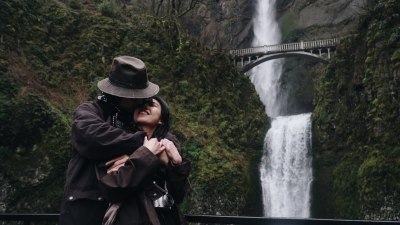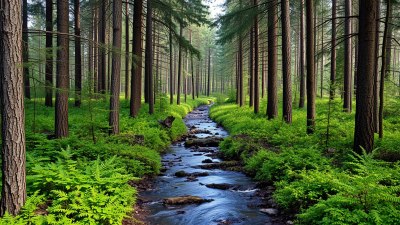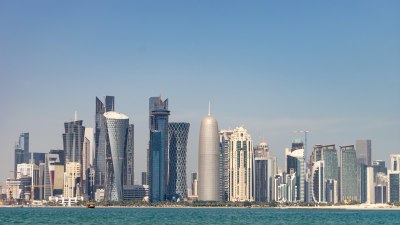How to Capture Stunning Travel Photos in Gloomy Weather
Learn to take breathtaking travel photos, even in gloomy weather. Enhance your photography skills today.

Image by freepic-diller on Freepik
Photography often thrives in bright sunshine, but capturing stunning travel photos in gloomy weather can yield equally powerful results. In this article, we will explore various techniques and tips to make the most out of overcast and rainy conditions. Whether you're an amateur photographer or a seasoned pro, adapting to the unique challenges posed by gloomy weather can lead to stunning images that tell a story of their own.
1. Embrace the Gloomy Atmosphere
Gloomy weather generates a specific ambiance that can add depth and emotion to your travel photos. Overcast skies can create a soft, diffused light that reduces harsh shadows while allowing colors to pop. When shooting in these conditions, learn to embrace the grey skies instead of lamenting their presence. Look for setting that reflects the mood of the weather; misty gardens, fog-draped mountains, or rainy streets can all provide picturesque backdrops.
2. Utilize Reflections
Rain can create beautiful reflections on pavements and other surfaces. After a rainfall, look for puddles or wet surfaces that mirror the surrounding environment. Position your camera to capture these reflections. They can add an intriguing layer to your images and make even the dullest locations seem captivating. Experiment with angles to discover unique compositions that utilize reflections effectively.
3. Enhance Color and Contrast
Gloomy days often wash out colors, making landscape and cityscape shots look flat. To counter this, increase the vibrancy and contrast of your images in post-processing. This can help bring back the punch that the gloomy day may have subdued. Moreover, shooting in RAW format allows more flexibility during editing, enabling better color correction and enhancement.
4. Use Tripods
Low light conditions often accompany gloomy weather, which can lead to slower shutter speeds and possible blurriness with hand-held shots. Utilize a tripod to stabilize your camera, allowing for longer exposures without risking motion blur. This is particularly useful for capturing landscapes, especially in conditions where light is scarce or when you want to create a blend of natural light and artificial illumination.
5. Play with LED Light Sources
If you're shooting in urban settings during gloomy conditions, look for artificial light sources such as street lamps, neon signs, or shop windows. These can inject color and vibrancy into your photos, contrasting beautifully against the subdued natural light. Especially during twilight or when the sky transitions to evening, using these light sources creatively can lead to stunning urban nightscapes.
6. Incorporate Interesting Foregrounds
Give your travel photos depth by including interesting foreground elements. Whether it’s a flower in a vibrant color, an old stone wall, or a traveling companion walking through the frame, foregrounds can lead the viewer's eye into the wider shot and enhance the overall composition. Keep the rule of thirds in mind to maintain a balanced image.
7. Capture Details
Gloomy weather often highlights details that might be overlooked on sunny days. Focus on textures such as raindrops on windowpanes, wet stones, or the patina on old buildings. Close-up shots of nature, such as flowers or leaves with droplets of rain, can also be striking. These intimate details tell the story of the weather while showcasing the subject beautifully.
8. Experiment with Black and White
The interplay of light and shadow in gloomy weather makes it an ideal time to embrace black and white photography. Without the distraction of color, your images can emphasize patterns, shapes, and textures, creating a strong visual narrative. Black and white images can evoke emotions that colored images might not, making them a fantastic choice for capturing the essence of a gloomy day.
9. Be Ready for Changing Conditions
One of the unique challenges of shooting in gloomy weather is the rapid change in conditions. Always be prepared; during a single outing, you might encounter everything from heavy rain to surprising bursts of sun. A weather-sealed camera and lenses can offer extra protection against unexpected conditions. Carrying a towel to dry off your gear can also be a lifesaver.
10. Capture Movement
Gloomy weather often brings rain, which can introduce great opportunities for capturing movement. Whether it’s raindrops falling, waves crashing against rocks or people moving with umbrellas, incorporating motion into your photographs can create dynamic images. Use a fast shutter speed to freeze motion or a slow shutter speed to introduce a sense of movement, such as blurring raindrops or creating smooth water effects.
11. Take Advantage of Natural Elements
Exploit the natural elements that accompany gloomy weather. Consider capturing fog rolling over mountains, mist rising from lakes, or clouds shrouding a mountain peak. These elements add drama and intrigue to your photos. Adjusting your aperture can also help maintain sharpness throughout the frame when capturing landscapes in damp conditions.
12. Dress for Success
As a photographer, your comfort is essential, especially when shooting outside in gloomy weather. Dress appropriately to stay warm and dry. Waterproof jackets, sturdy waterproof shoes, and warm clothing will allow you to focus on capturing stunning images rather than feeling uncomfortable. Remember that comfort often leads to better photography, as you’ll be more inclined to stay outdoors and take your time with your shots.
13. Seek Shelter
If the rain becomes too heavy, don’t hesitate to seek shelter. Cafés, bus stops, or any covered area can provide a space to wait out the rain while still allowing for potential photographic opportunities. Look for interesting compositions through windows or utilize the changes in light and reflections that occur due to the rain.
14. Make Use of Leading Lines
To guide your viewer’s eye through an image, utilize leading lines present in your environment. Roads, pathways, fences, or rivers can create a natural flow in a photograph. Gloomy weather can enhance these elements by providing an atmospheric backdrop, bringing attention to the lines that draw the viewer in dynamically. This technique is particularly effective in landscape photography.
15. Capture Candid Moments
Travel photography is not just about landscapes; capturing candid moments can tell a more profound story. Use gloomy weather to highlight the daily life of locals as they go about their routines in tougher conditions. Photographs of individuals walking under umbrellas, gathering in cafés, or enjoying the beauty of a rainy scene can create powerful narratives in your portfolio.
16. Post-Processing Techniques
Post-processing in software such as Lightroom or Photoshop allows you to enhance your photos effectively. Increase contrast, adjust brightness, play with shadows, and fine-tune saturation to bring your images to life. Using filters can also create unique styles or moods. For instance, a warm filter can soften the coldness of a grey day, while a vignette can lead the viewer’s focus toward the subject.
17. Stay Inspired
Always stay inspired and keep learning about photography. Study the work of other photographers who excel in low-light or gloomy weather settings. Follow blogs, attend workshops, or join photography communities in person or online to engage with fellow enthusiasts. Watching tutorials can provide valuable insights into new techniques and styles that might enhance your skill set.
Capturing stunning travel photos in gloomy weather requires creativity and a willingness to experiment. By embracing the moodiness of overcast skies, leveraging reflections, and enhancing color and contrast, you can produce breath-taking images that convey the unique beauty of your surroundings. Remember that gloomy weather presents excellent opportunities for detail, movement, and storytelling. With the right techniques and mindset, you can transform even the dullest day into a treasure trove of photography opportunities. Next time you find yourself facing gloomy weather, take your camera out, and explore the captivating potential that lies within.











